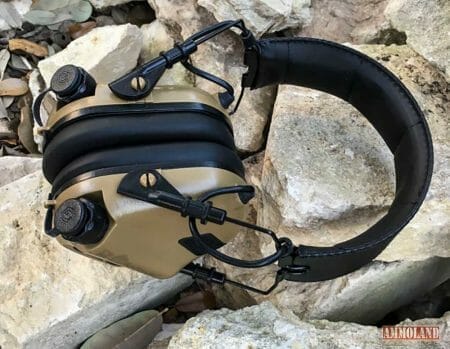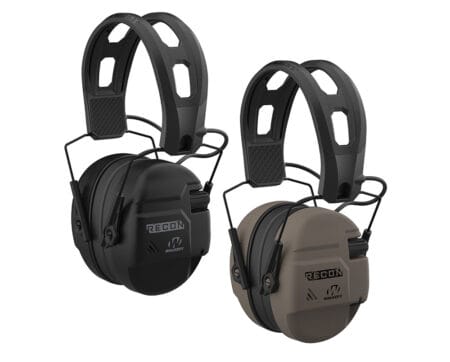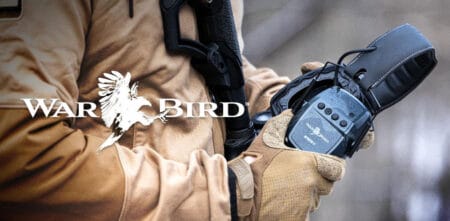Gun Suppressors – It’s Time for the Truth to Be Heard
By Direct Action


Honeoye Falls, NY –(Ammoland.com)- In much of Europe they are considered neighborly. In Finland and Norway one can be purchased without paperwork at the local hardware store.
Even in the United Kingdom, their use is often encouraged for hunting and acquiring one is relatively easy.
I’m talking about suppressors, “cans,” or as long as one understands the name isn’t literally true, “silencers.” (In Britain, they’re known as “moderators.”) But while the United States remains the gold standard in preservation of the right to keep and bear arms, these useful accessories have been demonized beyond all reason.
Far from the modern popular and erroneous notion that suppressors were created for organized criminals and assassins, when Hiram P. Maxim (son of Maxim machine gun creator Hiram Stevens Maxim) patented the first suppressor in 1910 his goal was to minimize noise pollution. Ads for the product featured a character called “Dr. Shush” and Maxim himself imploring those at a firing range to “hush,” with another noting, “Girls like it when there’s no nerve-ripping report.” Seemingly obsessed with sound, Maxim’s company, Maxim Silencer Co., would go on to make car mufflers and offer consulting services on noise reduction.
While Maxim’s marketing may have focused on politeness, his invention’s contribution to hearing safety is of greater importance. Most shooters and almost all hunters have firsthand experience with the effects of unsuppressed gunfire and know the results can be dangerous. The average gunshot is well above 140 decibels, the level at which permanent hearing loss can occur. Every responsible shooter uses proper ear protection at the range, but it’s not an option in home defense and many hunting situations. And while a suppressed firearm is by no means silent, it does offer protection from dangerous noise levels. In light of this, suppressors should be viewed as safety devices, rather than demonized.
Unfortunately, by the early 1930s some in law enforcement came to fear their possible use by criminals. When the National Firearms Act of 1934 was enacted, “silencers” were included alongside machine guns and short-barreled shotguns. To make sure the average citizen couldn’t buy a suppressor, the Congress imposed a $200 tax on the accessory. Considering the average family income at the time was $1,524 per year, it was a highly prohibitive sum.
Today suppressors are legal to own in 39 states, but since they are subject to the National Firearms Act, the would-be owner must fill out a Bureau of Alcohol, Tobacco, Firearms and Explosives Form 4, acquire the signature of his or her chief local law enforcement officer, and submit a passport-size photo to the BATFE along with a set of fingerprints. This information, along with the $200 transfer tax, is sent to BATFE for a rigorous background check. All of the information is then recorded in the National Firearm Registration and Transfer Record, the BATFE database of NFA firearms.
If this process sounds onerous, that’s because it is; but despite these regulations there are also 11 states (California, Delaware, Hawaii, Illinois, Iowa, Minnesota, New Jersey, New York, Massachusetts, Rhode Island and Vermont) that ban the possession of suppressors outright. Still others allow possession of suppressors, but bar their use for hunting.
Such state laws are pointless, as laws governing suppressors, just as with all other firearm laws, aren’t followed by criminals. Rather than purchasing them legally, violent criminals mostly opt for crude homemade suppressors made of materials such as soda bottles and duct tape—not exactly the kind of thing those willing to be registered and pay the $200 NFA transfer tax are interested in.
The strict federal regulations are more than enough, which is why the NRA Institute for Legislative Action has been working to abolish unnecessary and restrictive state laws. In April, Washington enacted a law clearing up a peculiar situation in which suppressors were legal to possess, but illegal to use. That same month, the Kansas and Montana legislatures debated the use of suppressors for hunting, with Kansas adopting legislation allowing for their use.
The most recent blow for freedom was struck in Michigan on September 2, when Michigan Attorney General Bill Schuette released a formal opinion declaring the possession, manufacture and sale of suppressors to be legal in the Great Lakes State.
Expressing support for the Attorney General’s sound logic were a number of Michigan law enforcement officials. Barry County Sheriff Dar Leaf noted a suppressor’s usefulness in helping “keep the peace” between shooters and their neighbors. Others cited federal law as sufficient regulation, with Marquette County Sheriff Michael Lovelace stating, “Noise suppressors are a useful tool for Michigan firearms enthusiasts and the rigorous federal licensing process serves as a safeguard to ensure only law-abiding citizens can be in possession.”
An issue like reforming state suppressor laws may not get as much attention as high profile matters like Right-to-Carry laws and UN gun control schemes, but rest assured that the NRA-ILA is working to make sure law abiding citizens can possess and use these useful accessories.
By educating our fellow shooters about the benefits and misconceptions of suppressors, we can help bring the remaining holdout states into line with the rest of the country, and the world.
About:
AR15.Com originated in 1996 as a mailing list for firearm enthusiasts. As the years passed and interest grew, a website came into existence to present those same enthusiasts with a means to collect, share, and explore information. Shortly afterwards, a bulletin board was added to create a more interactive experience for the growing list of users. The site was still in it’s infancy, but was growing in popularity. Visit: www.ar15.com




